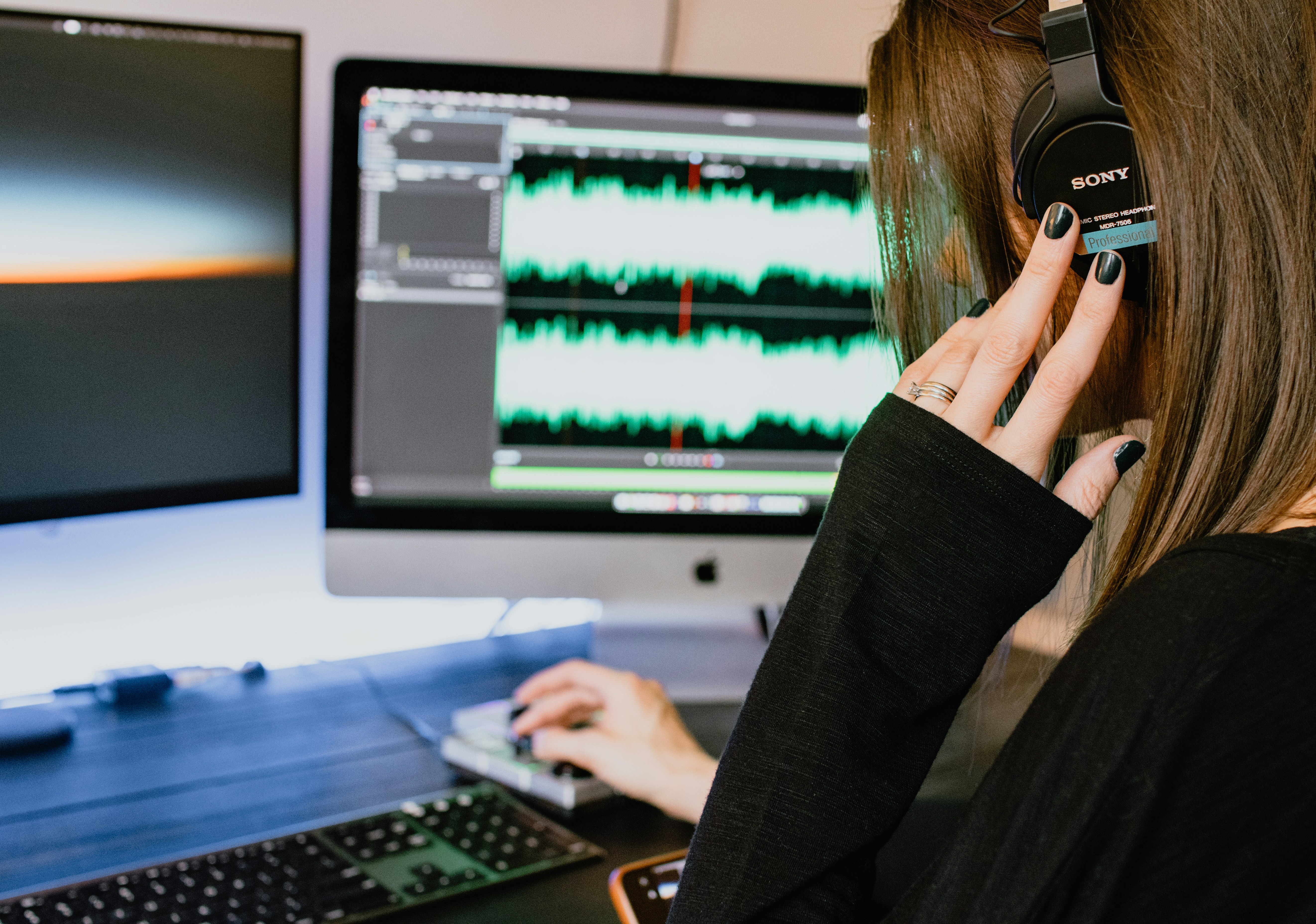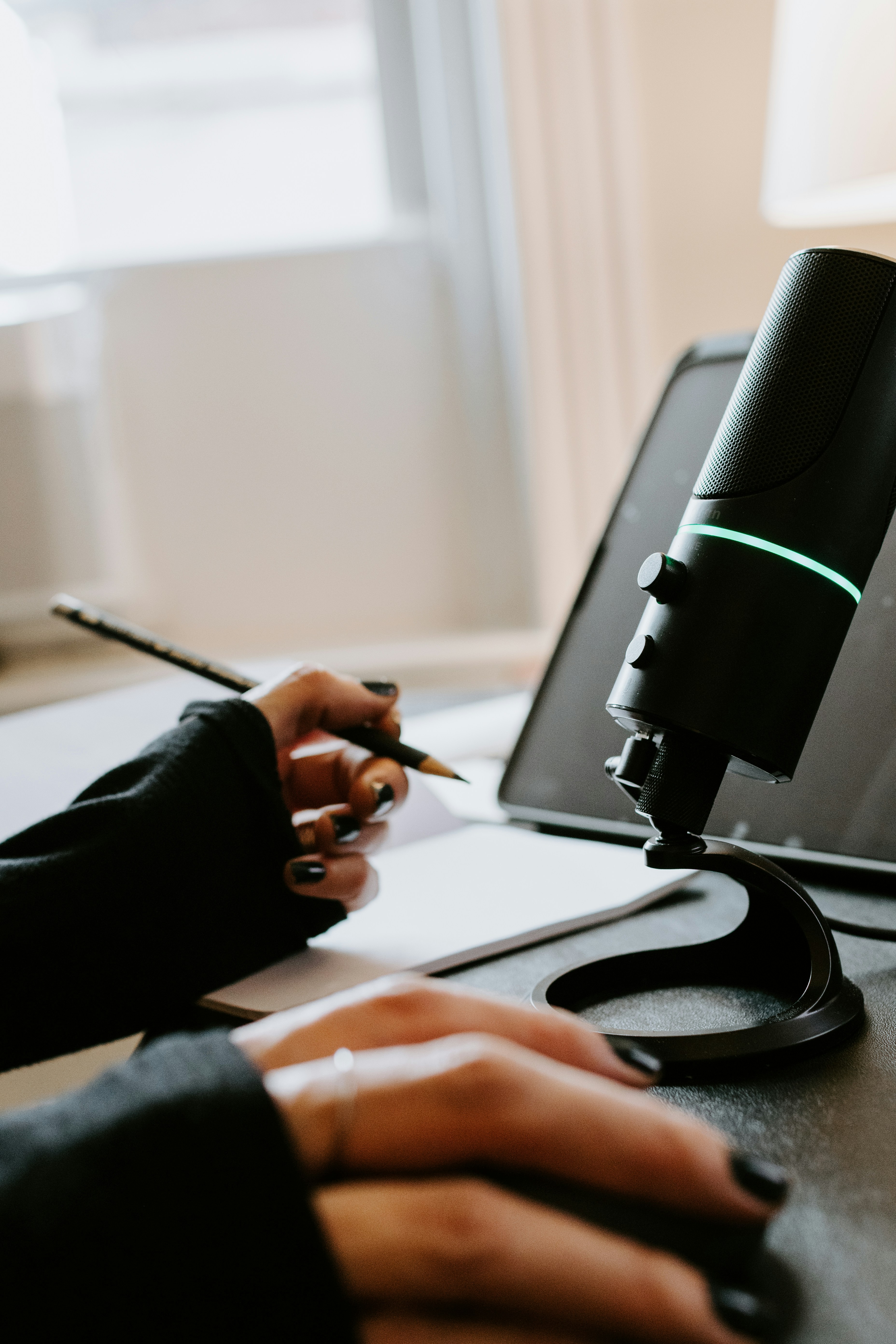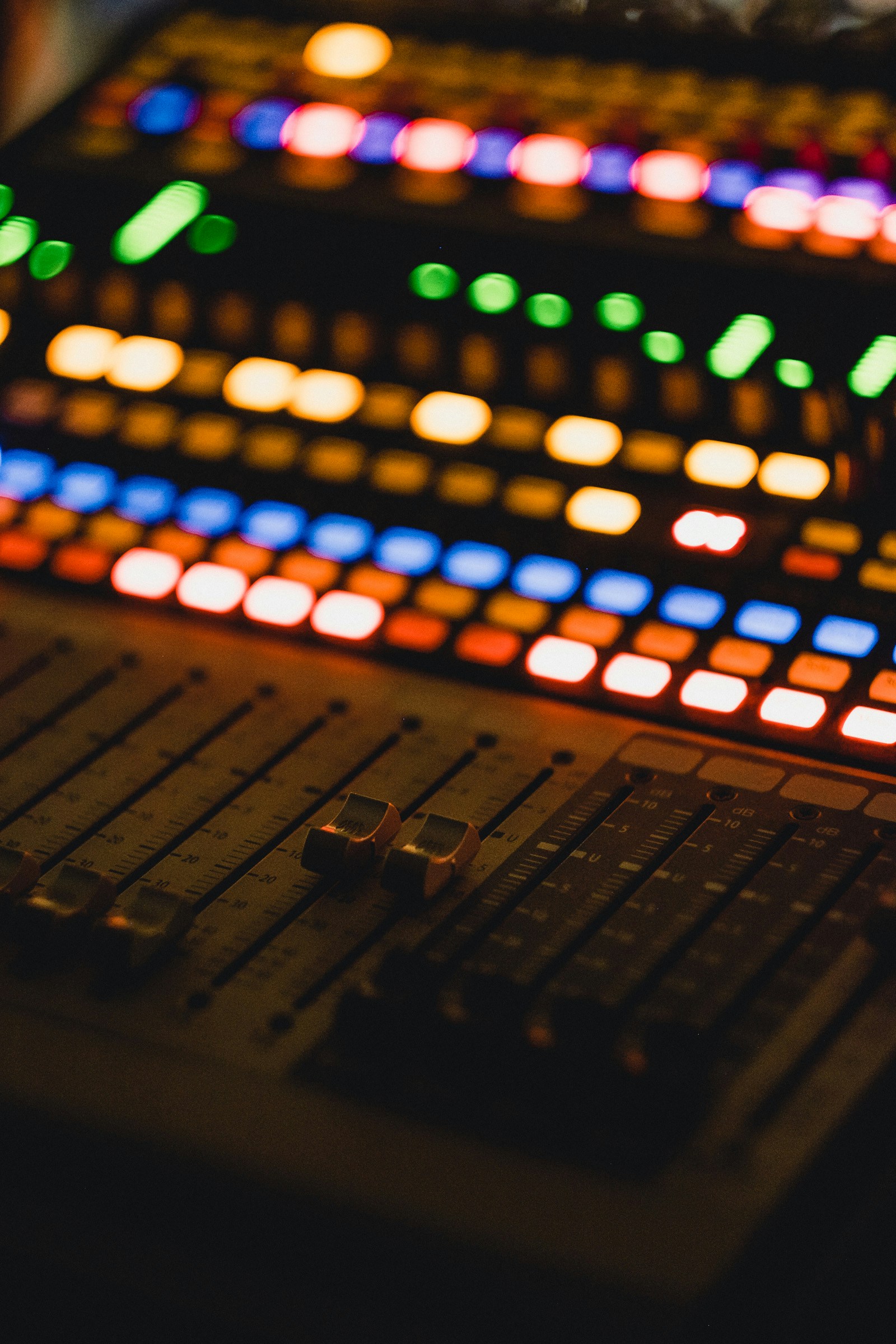Are you a podcasting enthusiast looking to take your recordings to the next level? If so, then choosing the right audio interface is crucial. A premium audio interface can make all the difference in achieving professional-quality sound for your podcasts. With so many options out there, it can be overwhelming to know where to start. Luckily, we’ve compiled a list of recommended brands for all your podcasting equipment needs, from microphones to recording software. Whether you’re a seasoned podcaster or just starting out, finding the perfect audio interface will help elevate your podcasting game to new heights.
Factors to Consider
When shopping for a premium audio interface for advanced podcasting, there are several important factors you need to consider. These factors will determine the suitability of the interface for your specific needs and ensure that you make an informed decision. Let’s take a look at these factors in detail.
Budget
Before diving into the world of premium audio interfaces, it’s essential to establish a budget. This will help narrow down your options and prevent you from overspending. Premium audio interfaces can vary significantly in price, so determining your budget beforehand will make the decision-making process much easier. Remember, you don’t necessarily need to break the bank to get a high-quality audio interface.
Connectivity
The connectivity options of an audio interface are crucial. You need to ensure that the interface you choose is compatible with your existing equipment. Common connectivity options include USB, Thunderbolt, and FireWire. USB interfaces are widely compatible and offer a straightforward plug-and-play experience, while Thunderbolt interfaces provide faster data transfer speeds. FireWire interfaces, although less common nowadays, still exist and may be worth considering if you have older equipment that requires FireWire connectivity.
Audio Quality
When it comes to podcasting, audio quality is paramount. The audio interface you choose should be able to capture and reproduce sound at the highest level possible. Several factors contribute to audio quality, including sample rate and bit depth, dynamic range, signal-to-noise ratio, and the quality of the preamps. Pay close attention to these specifications when comparing different interfaces.
Number of Inputs and Outputs
Consider the number of inputs and outputs you require for your podcasting setup. If you’re a solo podcaster who only needs to record one microphone at a time, a single-channel interface will suffice. However, if you plan to have multiple guests or use additional equipment such as an external mixer, you’ll need an interface with multiple input channels. Similarly, the number of output channels will determine how many headphones or speakers you can connect to the interface.
Compatibility
Ensuring that the audio interface is compatible with your operating system (OS) and digital audio workstation (DAW) is essential. Check the manufacturer’s website or product specifications to confirm compatibility before making a purchase. Some interfaces may be specifically designed for certain operating systems or work better with particular DAWs, so it’s vital to do your research in this area.
Software Integration
Consider the software integration options provided by the audio interface. Premium interfaces often come bundled with software that can enhance your podcasting experience. Look for interfaces that include software for recording, editing, and processing audio. Additionally, check if the interface supports popular third-party plugins, as these can greatly expand your creative possibilities. Lastly, some interfaces offer virtual mixer software, which allows you to have more control over your recording and mixing process.
Recommended Brands
When it comes to premium audio interfaces for podcasting, several brands stand out for their reliability, quality, and features. Let’s take a closer look at some of the top recommended brands in the industry:
Focusrite
Focusrite has long been a respected name in the audio interface market. Their interfaces offer exceptional audio quality, robust build quality, and user-friendly interfaces. Focusrite interfaces often come with a range of features suitable for podcasting, such as high-quality preamps, multiple input and output options, and bundled software.
PreSonus
PreSonus is another reputable brand known for its excellent audio interfaces. Their interfaces are renowned for their high-quality sound reproduction and versatile connectivity options. PreSonus interfaces often offer features such as MIDI connectivity, comprehensive software suites, and intuitive controls, making them a popular choice among podcasters.
Universal Audio
Universal Audio is well-known for its premium audio interfaces that cater to professional audio production needs. Their interfaces combine top-notch audio quality, advanced features, and seamless integration with their renowned DSP-powered plugins. Universal Audio interfaces are designed to provide a professional-grade podcasting experience.
RME Audio
RME Audio is a brand that consistently delivers audio interfaces with exceptional performance. Their interfaces are known for their low-latency operation, high-quality preamps, and transparent audio reproduction. RME Audio interfaces often include advanced features like TotalMix FX, which offers comprehensive control over routing and monitoring options.
Apogee Electronics
Apogee Electronics specializes in creating audio interfaces that excel in both sound quality and aesthetics. Their interfaces are known for their sleek designs, premium preamps, and excellent digital-to-analog conversion. Apogee Electronics interfaces often offer seamless integration with Apple products and come bundled with software optimized for macOS.
Budget-Friendly Options
If you’re on a tight budget but still want to upgrade your podcasting setup with a premium audio interface, there are several budget-friendly options available. These interfaces may have fewer features compared to their high-end counterparts, but they still deliver solid performance for podcasting purposes.
Focusrite Scarlett 2i2
The Focusrite Scarlett 2i2 is a popular choice among podcasters on a budget. It features two input channels with high-quality preamps, allowing you to record two microphones simultaneously. The Scarlett 2i2 offers USB connectivity, making it compatible with a wide range of devices. It also comes bundled with Focusrite’s Scarlett plug-in suite, providing additional processing options.
PreSonus AudioBox USB 96
The PreSonus AudioBox USB 96 provides a cost-effective solution for podcasters who need a reliable audio interface. It offers two inputs with high-headroom Class A preamps, ensuring clean and low-noise recordings. The AudioBox USB 96 connects via USB and comes bundled with Studio One Artist DAW software, offering a comprehensive recording and editing experience.
Behringer U-Phoria UMC404HD
For those needing more input options on a budget, the Behringer U-Phoria UMC404HD is worth considering. It features four inputs with high-quality preamps and offers USB connectivity. The UMC404HD provides solid audio quality at an affordable price point, making it a suitable choice for podcasters looking to record multiple microphones or additional equipment.
High-End Options
If you have a more generous budget and are looking for top-of-the-line audio interfaces for your advanced podcasting needs, you can explore the high-end options available. These interfaces are packed with features and offer the utmost in audio quality.
Universal Audio Apollo Twin
The Universal Audio Apollo Twin is a highly regarded audio interface that combines exceptional sound quality with powerful DSP processing capabilities. It features premium preamps, extensive connectivity options including Thunderbolt, and the ability to run Universal Audio’s renowned plugins in real-time. The Apollo Twin is an ideal choice for podcasters who prioritize both sound quality and professional-grade processing.
RME Babyface Pro
The RME Babyface Pro is a compact yet powerful audio interface that delivers outstanding sound quality. It offers two high-quality preamps, low-latency operation, and ultra-fast USB connectivity. The Babyface Pro also comes with RME’s TotalMix FX software, providing comprehensive control over your audio routing and monitoring options. This interface is perfect for podcasters who require a portable and feature-rich solution.

Apogee Ensemble Thunderbolt
The Apogee Ensemble Thunderbolt is a flagship audio interface that offers studio-grade sound quality and extensive connectivity options. It features eight analog inputs, four mic preamps, and the renowned Apogee AD/DA conversion technology. The Ensemble Thunderbolt connects via Thunderbolt and provides low-latency performance. With its premium build quality and top-notch audio performance, the Ensemble Thunderbolt is a powerhouse for professional podcasting setups.
Connectivity
The connectivity options available in audio interfaces play a crucial role in determining how seamlessly they integrate with your existing equipment and how well they meet your podcasting needs. Let’s take a closer look at the three main connectivity options: USB, Thunderbolt, and FireWire.
USB Interfaces
USB interfaces are the most common and widely compatible option for podcasters. They offer plug-and-play functionality, allowing you to connect the interface to your computer or mobile device with ease. USB interfaces typically come with USB Type-A or USB Type-C connections, and they can provide excellent audio quality and low-latency performance. They are suitable for most podcasting setups and offer a cost-effective solution.
Thunderbolt Interfaces
Thunderbolt interfaces provide faster data transfer speeds than USB interfaces, making them ideal for podcasters who require high track counts or need to work with resource-intensive plugins and software. Thunderbolt interfaces typically offer lower latency and higher bandwidth, allowing for more simultaneous inputs and outputs. However, it’s important to note that Thunderbolt interfaces require a compatible Thunderbolt port on your computer or device.
FireWire Interfaces
While FireWire interfaces are less common nowadays, some podcasters may still have older equipment that requires FireWire connectivity. FireWire interfaces offer reliable and stable performance and can provide low-latency operation. If you have FireWire-compatible devices or a legacy setup, opting for a FireWire interface may be necessary. However, it’s important to ensure that your computer or device has the necessary FireWire ports or adapters to connect with the interface.
Audio Quality
Audio quality is of utmost importance in podcasting. It directly impacts how your listeners perceive your content and can make or break the overall listening experience. When choosing a premium audio interface, several factors contribute to the audio quality it delivers.

Sample Rate and Bit Depth
Sample rate and bit depth determine the accuracy and resolution of the audio signal. The sample rate refers to the number of samples taken per second, while the bit depth refers to the number of bits used to represent each sample. Higher sample rates and bit depths result in more accurate and detailed audio reproduction. For podcasting purposes, a sample rate of 44.1 kHz or 48 kHz, and a bit depth of 24 bits are generally considered sufficient.
Dynamic Range
Dynamic range refers to the difference between the quietest and loudest sounds an audio interface can reproduce. A higher dynamic range allows for greater detail and clarity in your recordings. It ensures that subtle nuances and quiet moments in your podcast are accurately captured, creating a more immersive listening experience for your audience.
Signal-to-Noise Ratio
Signal-to-noise ratio (SNR) measures the level of the desired audio signal against the level of unwanted background noise. A high SNR indicates that the audio interface can effectively capture the desired audio without introducing significant noise. Look for audio interfaces with a high SNR to ensure clean and professional-sounding recordings.
Preamps
Preamps are an integral part of any audio interface, as they amplify the microphone or instrument signals to a level suitable for recording. High-quality preamps can significantly enhance the audio quality by providing clean gain and transparent sound reproduction. Look for audio interfaces that have reputable and well-regarded preamps to ensure that your recordings sound pristine.
Number of Inputs and Outputs
The number of inputs and outputs an audio interface offers is an essential consideration, depending on your podcasting setup and requirements. Let’s explore the different options available based on the number of input channels.
Single Channel Interfaces
Single-channel interfaces are suitable for solo podcasters who only need to record one microphone or instrument at a time. They provide a cost-effective solution without compromising on audio quality. Single-channel interfaces typically come with a single XLR or 1/4″ input, allowing you to connect a microphone or instrument directly.
2-Channel Interfaces
2-channel interfaces are ideal for podcasters who occasionally have guests or require more flexibility in their recordings. These interfaces provide two input channels, typically with XLR and 1/4″ combo jacks, allowing you to connect two microphones or instruments. They can also be useful for recording in stereo or utilizing stereo effects.
4-Channel Interfaces
4-channel interfaces are suitable for podcasters who regularly have multiple guests or need to record multiple sources simultaneously. These interfaces offer the capability to connect up to four microphones or instruments simultaneously, providing more flexibility in your podcasting setup.
8-Channel Interfaces
8-channel interfaces are designed for podcasters who require even more channels for recording, such as panel discussions or interviews with multiple guests. These interfaces typically provide XLR inputs for connecting microphones and are equipped with advanced features to handle large-scale podcasting setups.
Compatibility
Ensuring compatibility between your audio interface, operating system (OS), and digital audio workstation (DAW) is crucial for a smooth and efficient podcasting experience. Let’s take a closer look at the compatibility factors you need to consider.
Operating System Compatibility
Check if the audio interface you’re considering is compatible with your operating system. Most premium audio interfaces support major operating systems such as macOS and Windows. However, it’s essential to verify compatibility with your specific version of the operating system, as updates and changes can affect compatibility.
DAW Compatibility
Digital audio workstations (DAWs) are software applications that allow you to record, edit, and mix audio. Make sure that the audio interface you choose is compatible with your preferred DAW. Most premium audio interfaces support popular DAWs such as Pro Tools, Logic Pro, Ableton Live, and Studio One. However, it’s always wise to confirm compatibility with your specific DAW version to avoid any compatibility issues during your podcasting workflow.
Software Integration
Software integration plays a significant role in enhancing your podcasting experience and workflow. Let’s explore the key aspects of software integration to consider when choosing a premium audio interface.
Included Software
Many premium audio interfaces come bundled with software that can enhance your podcasting capabilities. This can include recording and editing software, virtual instruments, effects plugins, and more. Check if the interface you’re interested in includes software that aligns with your podcasting needs. Bundled software can save you money and provide a comprehensive solution right out of the box.
Third-Party Plugins
Podcasters often rely on third-party plugins to enhance their audio recordings. These plugins can provide a wide range of effects, EQs, compressors, and other processing tools to elevate the quality of your podcast. Ensure that the audio interface you choose supports the use of third-party plugins and integrates seamlessly with your preferred plugin ecosystem.
Virtual Mixer Software
Virtual mixer software allows you to have more control over your recording and mixing process. It provides an intuitive interface for adjusting input levels, applying effects, and routing audio. Some premium audio interfaces come with virtual mixer software that offers enhanced control over your audio interface’s features and settings. Consider whether this feature would be beneficial to your podcasting workflow.
Conclusion
Choosing a premium audio interface for advanced podcasting requires careful consideration of several factors. Assessing your needs, considering your budget, researching and comparing different options, and making an informed decision are essential steps in finding the perfect interface for your podcasting setup. Remember to prioritize factors such as audio quality, connectivity options, the number of inputs and outputs, compatibility with your OS and DAW, and software integration when making your choice. By following these guidelines, you’ll be well-equipped to take your podcasting to the next level with a premium audio interface suited to your needs. Happy podcasting!


